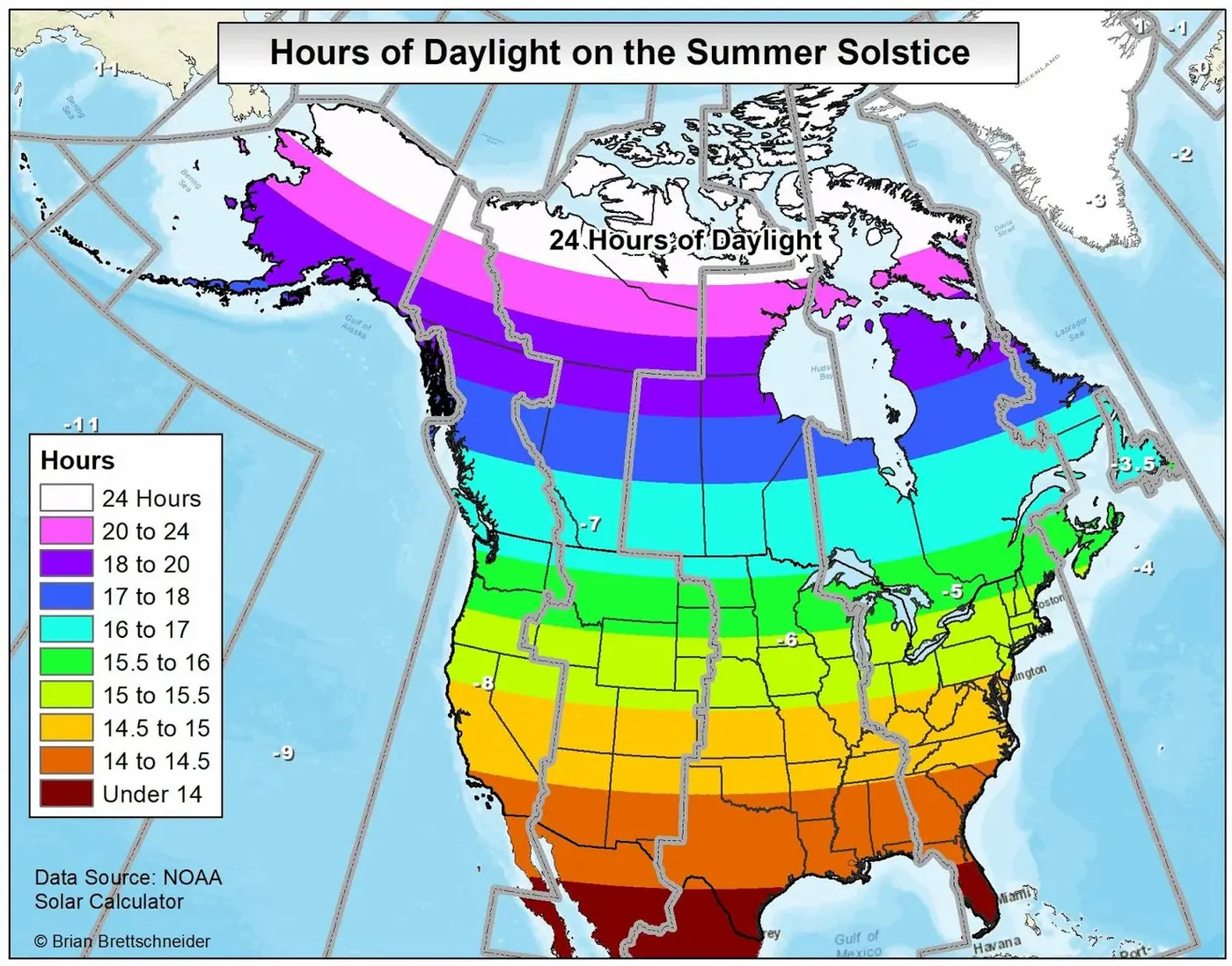Welcoming the Solstice
6:07 AM – that’s the exact moment when the sun’s rays touch the northernmost point on the globe (depending on your location), with the sun rising the highest and producing the longest day of the year. Will you be rising early for the summer solstice tomorrow?
Whether you are or you aren’t setting that alarm, it’s still important to know the science behind this day. So, get ready for a flashback back to elementary school science!
Remember how the Earth is tilted on an axis by about 23.5 degrees? This tilt is why we have seasons and it’s the reasons why Australia is in winter when the US is in summer and vice versa. In the Northern Hemisphere, we get the biggest tilt toward the sun in June (21st, to be specific), which results in more daylight and warmer temperatures. Meanwhile, June 21st in the Southern Hemisphere means the shortest day of the year. Look at the photo below to figure out roughly how many hours of daylight your home will receive on the solstice.
As you can determine from the picture, the amount of daylight you will see on the solstice depends on your latitude or distance from the equator. The farther from the equator (in the Northern Hemisphere), the more daylight tomorrow will bring you. If you’re up north of the Arctic Circle, it will never even get dark!
But the solstice doesn’t mean that tomorrow will be the latest sunset or earliest sunrise. Depending on your location, those days usually come a few weeks or days before or after the actual solstice. Why? Again, it all links back to our tilt, as well as our elliptical orbit around the sun. Similarly, temperature highs don’t always align with the solstice either – the hottest days come a little later in the summer typically, the same way that December 21st isn’t usually the coldest day of winter (if only!). Though temperature does have to do with the directness of the sun’s rays, other factors such as ocean currents influence temperature change significantly.
So, now that you know…have you decided to set the alarm?
Sources: The Washington Post









